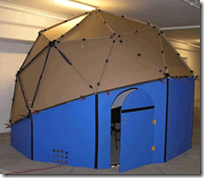Explore the stars with WorldWide Telescope
 If you could travel the stars where would you go? Let your students decide which planet they want to visit first using this online interactive planetarium.
If you could travel the stars where would you go? Let your students decide which planet they want to visit first using this online interactive planetarium.
WWT is a powerful virtual telescope that helps students visualise and understand our vast cosmos. It inspires learners to explore, to ask questions, and to practice the scientific skills that astronomers use to build our understanding of objects that are literally across the universe.
Young children can learn about the causes of night and day by manipulating the real-time model of Earth in our solar system. Middle school children can use it to understand seasons and Moon phases, as well as distance scales in the universe. High school students can learn how astronomers have pieced together the life cycle of stars by observing breathtaking nebulae, white dwarfs, and red giants. Tertiary students can explore important maps made by astronomers that help us to understand how gravity influences the shapes and structures we see in the universe. Every student can use it to tell and share their own stories of what they have learned about astronomy and space
Where can I find out how to use it?
There’s a WorldWide Telescope Ambassadors Program to enrich interactive learning. It’s an outreach initiative run by researchers at Harvard University, WGBH, and Microsoft Research. Ambassadors are astrophysically-literate volunteers who are trained to be experts in using WWT as teaching tool. Ambassadors and learners alike use WorldWide telescope to create dynamic, interactive Tours of the Universe, which are shared in schools, public venues, and online. Ambassador-created Tours are being made freely available and will ultimately form a comprehensive learning resource for Astronomy and Astrophysics. You can learn more at http://www.wwtambassadors.org
The other place to look is the Education page on the WorldWide Telescope website. Amongst other things, there is also a set of resources for classroom use, developed in the form of curriculum guides, lesson plans and additional resources to assist teachers and students launching into an exploration of the universe through the lens of the WorldWide Telescope. Since it uses the most current data taken from celestial imaging, users can easily pan and zoom into specific areas of outer space for fine tuned investigations. Images are taken from the Hubble Space Telescope, as well as numerous telescopes here on Earth.
Want to go further in using it for teaching - you need a dome!
 There is a do-it-yourself option for creating a planetarium for about a thousand dollars, using supplies from local office and hardware stores and a special first surface spherical mirror.
There is a do-it-yourself option for creating a planetarium for about a thousand dollars, using supplies from local office and hardware stores and a special first surface spherical mirror.
Many students never have a chance to go to a bricks and mortar planetarium to learn astronomy, so the team created a virtual planetarium with WorldWide Telescope. However, outer space is still best experienced in an immersive environment like a dome, so they have published a set of plans that enable schools to build their own small planetarium that will allow 15-30 students at a time to experience a high-quality digital projection of space. The investment is less than $1,000 in building materials, plus a laptop and projector, along with some household tools and ‘sweat equity’ (ie there’s work involved!).
One of the principal benefits of having an on-site planetarium is that WorldWide Telescope will allow students to create their own shows to share what they have learned with the rest of the school- completing the learning cycle. You can download the instructions to build your own here.
Where do I get WorldWide Telescope from?
WorldWide Telescope is available as a programme to download, or a web-based virtual telescope.
You can get both versions at the WorldWide Telescope website